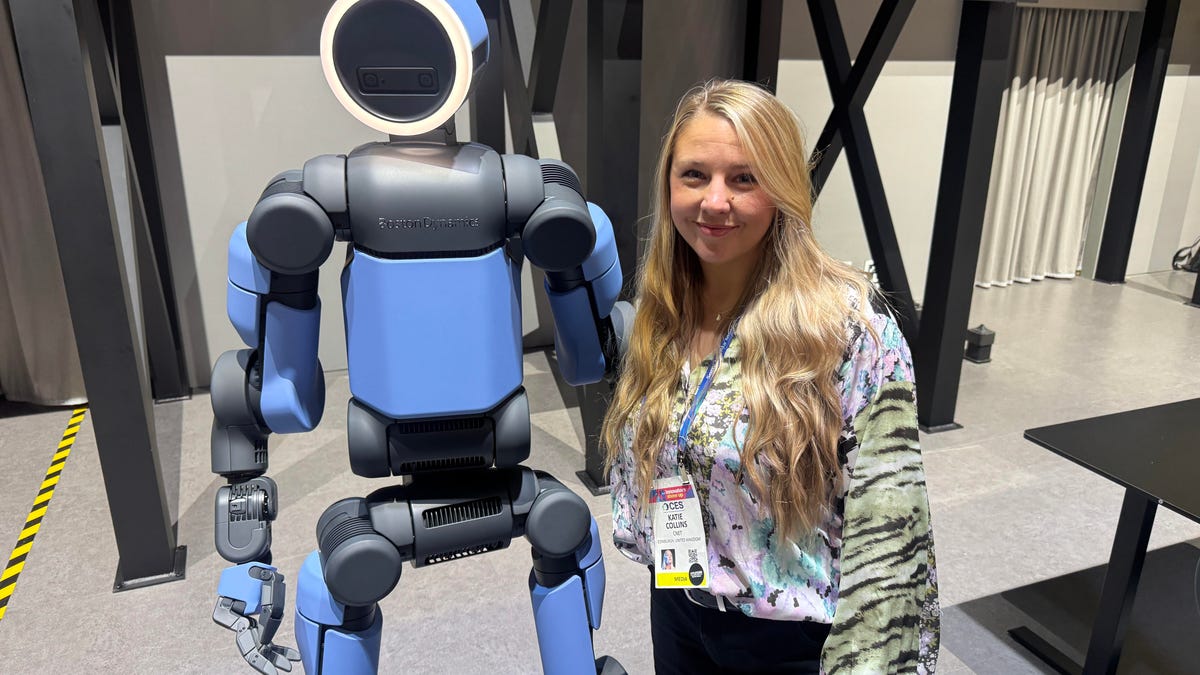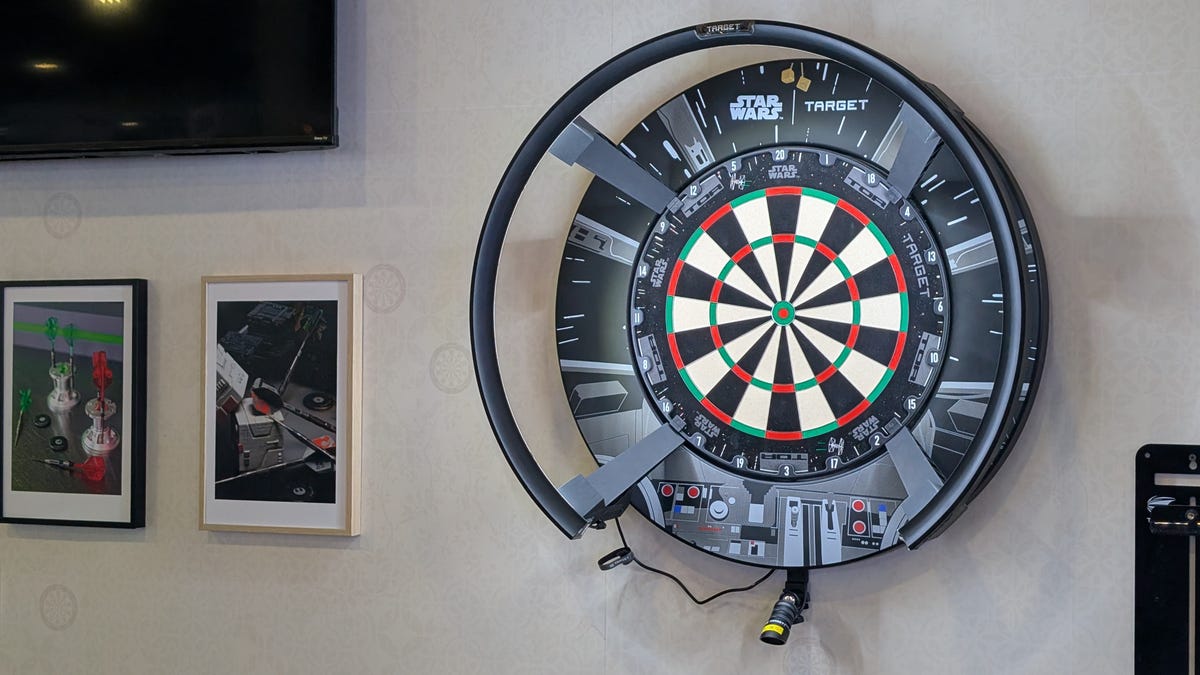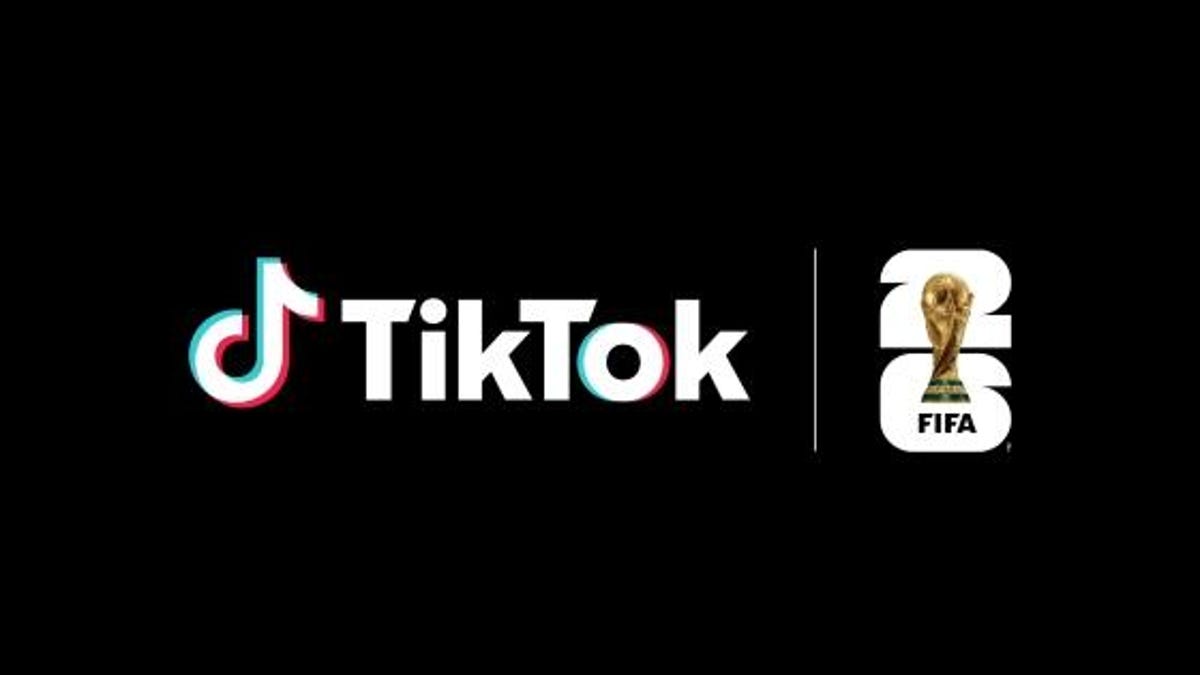Technologies
iPhone WWDC Wishes: What We Want to See Apple Include in iOS 19
Whether Apple calls it iOS 19 or iOS 26, these are some of the things we hope the tech giant brings to the iPhone next.

Apple is set to hold its Worldwide Developer Conference on Monday, when the tech giant will show the world what it’s been cooking up during the past year for iOS 19 — or iOS 26 — the software that runs the iPhone. Until then, CNET’s experts have their own ideas about what Apple should bring to the iPhone.
While iOS 18 brought some useful new features to all iPhones, like RCS messaging, and Apple Intelligence to newer iPhones, we’re still taking bets on what Apple will include in iOS 19. Reports suggest Apple is planning a significant redesign of the iPhone OS, changing everything from icons, apps, menus and more. But CNET’s writers and editors have a few ideas we’d like to see in the upcoming OS. Some things we’ve asked for in the past, like customizable lock screen controls, have come to fruition, so maybe we’ll hit the mark again this year.
Here are some of the features and changes we hope Apple includes in the upcoming iOS software.
Bring split screen to the iPhone
Add a native split screen. It’s been available on Android phones and the iPad for years. But on iOS I still have to run my calculator and budget tracking note in two separate windows.
— Mike Sorrentino
Start a workout right from my iPhone
I’d like the ability to start an outdoor workout from the Fitness app on my iPhone (like I can do in Strava or Polar). That way if I forget to wear my Apple Watch or I don’t have one, I can still record my workout. The Apple Watch uses heart rate data to calculate move minutes but I don’t see why the iPhone can’t give me credit for an actual workout using other indicators like distance/pace on a run.
— Vanessa Hand Orellana
No more green bubbles, please
I’m overjoyed Apple added RCS messaging with iOS 18, but I’m going to dream big here: I’d love it if texts with Android users weren’t still green! While it’s great to be able to finally send high-resolution media and see typing indicators with folks who aren’t also using iMessage, it’s still far too easy for iPhone users to scoff at anyone turning their text thread green. End the pettiness once and for all!
— Abrar Al-Heeti
An easier way to manage unused apps
I have more apps on my iPhone than I’ll ever use, after years of installing things to try out and then forgetting about them. Shunting everything into the App Library helps get it out of mind, but that’s the app version of keeping a box of cables you think you might need some day. So I’d like a way to clean up apps, similar to how you can identify large apps in Settings > General > Storage. Let me see when I installed them, the last time I used them and be able to delete the ones I no longer want. I know this sounds fiddly but the thought of going through them all manually is exhausting, so that will never happen.
— Jeff Carlson
Searchable clipboard manager for all your copy and paste needs
I want a clipboard manager in iOS 19. The iPhone has a single copy and paste option, meaning if you copy something, and then copy something else, that first thing you copied is lost. For iOS 19, I’d love to see a searchable clipboard manager, one that has a history of all the things I’ve copied in the last hour, day, week or even month. And if I paste something, I’d like to see multiple options that I can choose from appear right at my fingertip.
— Nelson Aguilar
More customization options for all screens
I want more lock screen, home screen and Control Center customization options, please. I’d like to place my lock screen controls elsewhere on the screen so I don’t accidentally open any control — including, yes, my flashlight. Same thing with the home screen. I appreciate being able to place apps anywhere as long as they are within Apple’s oppressive grid that locks our apps into little boxes. If you have large icons — like I do — there’s an entire empty row at the bottom where it looks like apps or folders can go there but they can’t. Let us breathe the air of freedom, Apple! Please, for the love of everything good, let me move the scroll bar on the right side of the Control Center. I keep hitting it when I open the Control Center and it takes me to a page I don’t intend to be on, which makes it frustrating to use.
— Zach McAuliffe
Long press, double click and more action button triggers
Now that the Action button is on more iPhones, please add support for triggering different shortcuts with multiple presses. In its current setup, I can set the Action button to trigger one action at a time. By default it can toggle between turning on the ringer and putting your iPhone into silent mode. But there are a number of other options for it like being able to open the Camera app and take a photo or make an elaborate automation in the Shortcuts app like to use it to order coffee from Dunkin’.
But the Action button could do so much more if Apple would add support for multiple input clicks. Like it could be a toggle for ringer/silent mode with a single long press, but do something else (like turn on/off the flashlight) with a double-long press. I think this would add so much functionality to the button and as a result open it up to even more people taking more advantage of it.
— Patrick Holland
Better Log video editing tools
I want iOS 19 to add better editing tools for Log video. The ability to shoot Log footage directly on the iPhone is amazing for enthusiastic filmmakers like me but it can only be edited by transferring it off of your phone to an iPad or MacBook. I’d love to see Apple bring deeper editing tools to be able to add cinematic color grades to your Log footage directly on your iPhone.
— Andrew Lanxon
Intelligently organize photos by event in the Photos app
Okay, we’re all glad that in iOS 18 Apple improved the Photos search by adding AI image recognition to actually bring up all the images of your cats. It slightly makes up for the questionable revamped layout of photos and albums that confuses me to this day. I’d love it if in iOS 19, the Photos app had a new way to view photos: in a timeline intelligently organized by event. Say you go to the park for a birthday and have a bunch of photos clearly from the same occasion — the app prompts you to confirm they’re all connected, asks for a title and, boom, event logged. Then I could look at a vertical timeline of logged events from the past few months or years, all of which can be searched if I can’t quite remember, say, when I last went to the park. Yes, I can do this manually by making albums, but it’s the kind of fastidious labor I just can’t bring myself to keep up with. That’s what I want AI to do for me.
— David Lumb
Simple volume controls across the iPhone
Sometimes it’s the small changes that can help make for a smoother experience. I want to see Apple clean up volume controls. If I set the volume to a certain level, I want it to stay at that level for all applications. Sometimes the settings can vary depending on what you’re doing. Too often I come across the problem of lowering my volume to prepare to listen to something — but surprise! — the volume is loud again because I put in headphones and it keeps the louder setting I used the last time I listened to music in my headphones. It just leads to unnecessary frustrations, and makes users feel like they don’t really have control of their devices.
— Bridget Carey
For more on Apple, here’s what to expect from WWDC 2025 and our thoughts on the iPhone 16 Pro and iOS 18 months after their launch. You can also check out our iOS 18 cheat sheet.
Technologies
I Got Up Close and Personal With Boston Dynamics’ New Atlas Robot
Before Atlas takes its first steps into the world of work later this year, I found myself face-to-face with CES 2026’s most talked-about robot on the show floor.

When I say that I went hands-on with the new Boston Dynamics Atlas robot, I mean that I actually held hands with it. This humanoid robot, which CNET just awarded the Best Robot of CES Award, is one of the most advanced in the world, and I couldn’t pass up the opportunity to get up close and personal with it.
This product version of the robot, which is set to be shipped to Hyundai factories imminently to start working, has been the talk of CES this year. The specific Atlas robot I encountered was a static model that wasn’t turned on or fully operational. Our interactions were, therefore, sadly one-sided. Still, I ran my hands over its soft-touch plastic shell and gently prodded at its finger joints, wondering how it would feel if they gripped me back.
People tend to have varying feelings about humanoid robots — understandable given that they are built to some degree in our image, while also usually being stronger than us, with «brains» that we don’t fully understand. Atlas definitely evokes contradictory emotions for me — even more so when I stood face-to-face with it.
I’m in awe of the engineering, a little fearful of its capabilities, hesitant about what it could mean for the future of humanity and charmed by its design and styling. The periwinkle blue iteration of Atlas that I met on the show floor at CES 2026 almost bears more resemblance to a Dyson product than it does the industrial robots that defined Boston Dynamics’ early days, when it was best known for its work with DARPA.
«There’s a lot of really specific things about this robot that probably look a little weird,» said Zachary Jackowski, Boston Dynamics VP and general manager of Atlas. He pointed to the legs, which he described as «like nothing anyone else was doing.»
Atlas’ thighs are narrow set and in line with the torso, while the calves are wider set, attached to their upper counterparts with a circular joint. This robot is, in fact, all subtle curves and soft lines. There are no harsh edges or stark angles.
During a year when CES has been flooded with humanoid robots, Atlas definitely does stand out due to its design. It appears both less classically human and less industrial than some of its peers, while also lacking the often intimidating, featureless faces they tend to exhibit. Instead, it has two low-set cameras resembling eyes placed where you’d usually expect a mouth to be. Its face is a perfect flat circle, defined by an LED halo that gives it a somewhat Pixar lamp effect.
I asked Jackowski why Boston Dynamics decided to skew so relatively unhuman with this version of its humanoid. «Well, it’s not a human,» he said. «It projects the wrong first impression about a robot to have it pretend to be something that it’s not.»
Particularly in the early days of humanoids, he added, robots won’t have anything like human-like intelligence. People should look at it and see it for what it is — a tool for performing tasks safely and efficiently.
In fact, most of the design decisions were made to keep Atlas as simple, scalable and safe as possible, Jackowski said. I remark that there’s some irony in thinking of a humanoid robot as simple, given the complexity of the technology and development process to bring Atlas to life.
The key to making it simple, Jackowski said, is having a strong enough grasp of the technology to «accomplish the complex thing of building a humanoid robot,» but then being able to take it apart and understand that you can use fewer computers and actuators in it while achieving the same results.
And it’s essential to Boston Dynamics that Atlas is perceived as simple. After all, it’s a general-purpose humanoid, which might eventually be sent far and wide to fulfil all manner of roles. Jackowski calls it the «ultimate generalist.»
Simplicity aside, there are aspects of Atlas that Jackowski believes set it apart from other humanoids at the show. «The repairability of this robot is crazy good,» he said. «The runtime is crazy good. The strength is unlike anything.»
From working in Hyundai’s manufacturing plants, Atlas’s job trajectory is to eventually graduate to many of the same industrial environments where Boston Dynamics’ Spot robot works, before moving to bussing tables in the service industry and eventually into the home. The robot will evolve between now and then, Jackowski said. However, this could be an early glimpse of the type of humanoid that will eventually be our housemate.
That’s some way away, though, which is probably for the best. As I gaze up at Atlas, which I’d guess is around the same height as my husband, my feeling is that, however impressive Atlas is, I’m still not ready for it to move in.
Technologies
This Star Wars Dartboard Has a Secret That Will Stop You From Using the Force to Win
This cool dartboard has cameras to track your score and keep you honest

Right in the middle of the high-tech show floor at CES 2026 sits a pub called the Bull and Barrel with some of the coolest dartboards I’ve seen. Target Darts was showcasing its collaboration with both Star Wars and Xbox. Darts may not be for everyone, but I love «shooting some arrows» in my basement with the family. I also love anything Star Wars themed, so these tick a lot of boxes.
The basic Star Wars set comes with a branded board and wall protector that resembles the cockpit of the Millennium Falcon and costs $200. The board is of very high quality, with a tight-knit sisal fiber face, and the protector is thick enough to keep stray shots out of your drywall. The graphics are cool too, with nods to the original Falcon and even have the gold dice hanging above.
The big tech twist to this board, though, is the Omni light ring around the outside. It uses four cameras to track your dart’s position, then sends that info to an app that keeps score. The scoreboard is crisp and clear and uses the voice of legendary darts announcer John McDonald to narrate your game. It’s pretty great to hear his voice announce my terrible scores.
The Omni also allows you to connect with other players worldwide via shared scoreboards. I love the idea of my dad having a board at his house or playing a match with me at my house. It adds a feeling of community to home darts that you don’t normally get outside a pub or bar.
The Omni is a much more expensive proposition than the Star Wars set, coming in at $650, but if you’re serious about the game and a Star Wars fan, it looks to be a great investment.
Technologies
TikTok and FIFA Team Up for World Cup 2026 Coverage
A new team-up aims to make this summer’s tournament more accessible for fans.

If you hadn’t already planned on swiping on TikTok videos of the 2026 FIFA World Cup, a new partnership between the social media platform and tournament organizer FIFA could motivate you to start stretching out your thumbs.
As the soccer tournament nears — it will take place from June 11 to July 19 and span 16 host cities in Canada, Mexico and the US — TikTok will become FIFA’s first «preferred platform.» According to a FIFA statement on Thursday, this entails TikTok providing more coverage of the World Cup, including original content and even livestreaming of some portions of matches.
Don’t miss any of our unbiased tech content and lab-based reviews. Add CNET as a preferred Google source.
You can use the FIFA World Cup 2026 hub on TikTok to find content, match tickets and viewing information, as well as participation incentives such as custom stickers and filters.
In the US, World Cup games will air live across Fox and FS1. If you don’t have cable, you can get a live TV streaming service, such as YouTube TV, which includes those channels. Additionally, every match will stream live on Fox One and the Fox Sports app.
«FIFA’s goal is to share the exhilaration of the FIFA World Cup 2026 with as many fans as possible,» FIFA Secretary General Mattias Grafström said.
-

 Technologies3 года ago
Technologies3 года agoTech Companies Need to Be Held Accountable for Security, Experts Say
-

 Technologies3 года ago
Technologies3 года agoBest Handheld Game Console in 2023
-

 Technologies3 года ago
Technologies3 года agoTighten Up Your VR Game With the Best Head Straps for Quest 2
-

 Technologies4 года ago
Technologies4 года agoBlack Friday 2021: The best deals on TVs, headphones, kitchenware, and more
-

 Technologies4 года ago
Technologies4 года agoGoogle to require vaccinations as Silicon Valley rethinks return-to-office policies
-

 Technologies4 года ago
Technologies4 года agoVerum, Wickr and Threema: next generation secured messengers
-

 Technologies4 года ago
Technologies4 года agoOlivia Harlan Dekker for Verum Messenger
-

 Technologies4 года ago
Technologies4 года agoiPhone 13 event: How to watch Apple’s big announcement tomorrow
